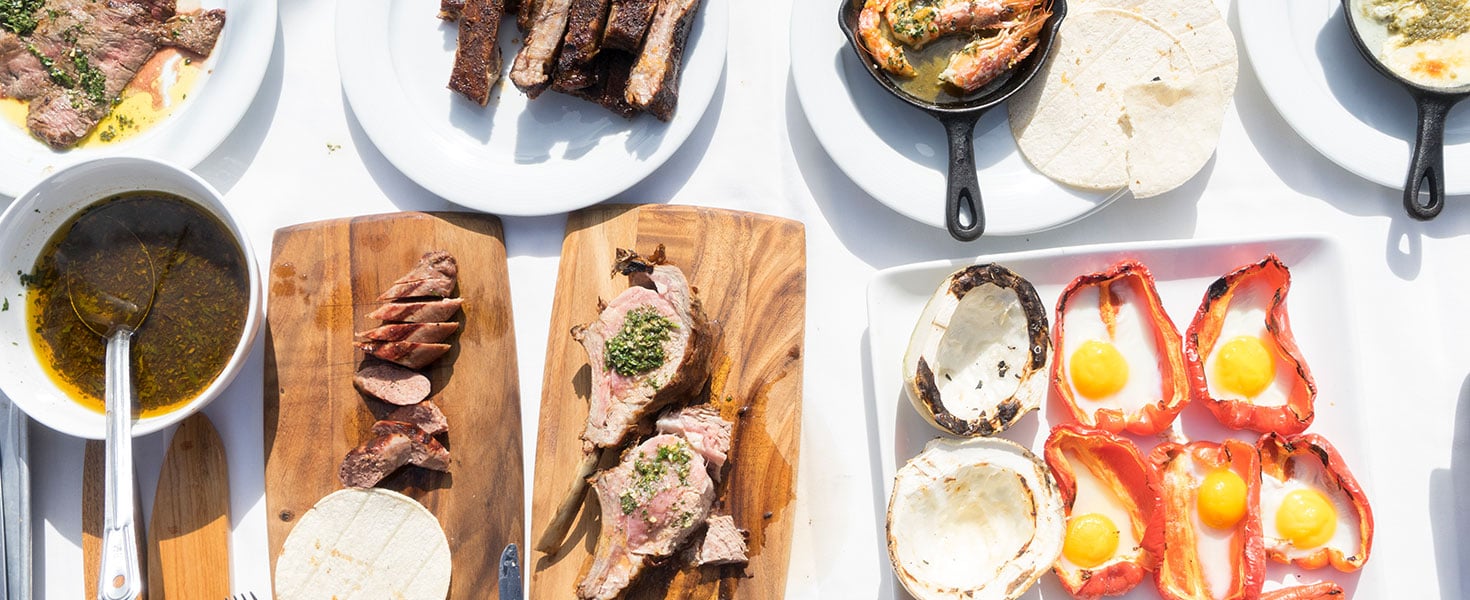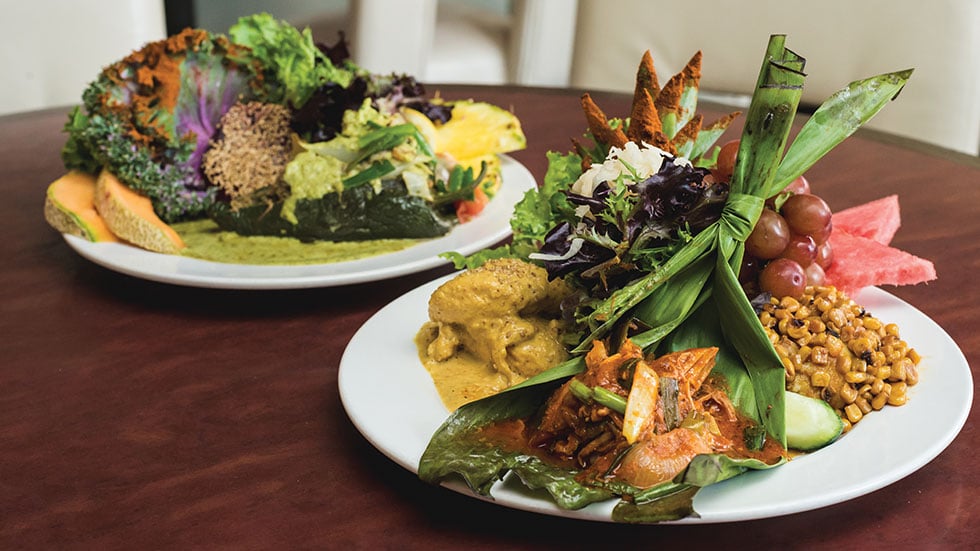Culinary Cred: Dining Destinations in the Southwest
Dig in to why Tucson and San Antonio have earned honors as UNESCO Creative Cities of Gastronomy


If you take one thing away from a visit to Tucson, Arizona, and San Antonio, Texas, the chefs and tourism representatives in these cities hope it is this: they are not one-course towns.
“I think most people probably assume that we are mostly about Mexican food, but they’ll be pleased to discover there are many more dimensions to our food scene,” says Jonathan Mabry, executive director of the nonprofit Tucson City of Gastronomy. Mabry helped to write the successful nomination that in 2015 made Tucson the country’s first Creative City of Gastronomy, an honor conferred by the United Nations Educational, Scientific and Cultural Organization (UNESCO). “We have multicultural cuisine that includes traditional dishes of this region as well as new dishes using heritage ingredients. It’s a very exciting and creative food scene in every dimension.”
Promoters of San Antonio echo Mabry’s sentiment when talking about their own city. They embrace the Tex-Mex cuisine that most often defines their food scene but prefer to use the term Tex-Next, as in taking traditional Texas ingredients and dishes in new directions. San Antonio earned the Creative City of Gastronomy designation in 2017, making it the second such city in the US.

El Guero Canelo Sonoran dogs. Courtesy of Visit Tucson
TASTE OF TUCSON
The UNESCO designation recognizes Tucson’s unparalleled American agricultural credentials—people have been farming here longer than anywhere else in this country—along with its numerous culinary innovations, Mabry says. Those innovations range from food research conducted at the University of Arizona to a seed library that allows anyone with a library card to get free desert-adapted seeds to grow food in their yard.
“With new archaeological discoveries, we now know that farming has been going on in this area for more than 5,000 years,” Mabry says. “Those ancient crops are still being grown today and are still ingredients served in our restaurants and home kitchens.
The Tucson metro area is home to more than 2,500 restaurants and bars, with nearly two-thirds of these independent businesses locally owned. For help narrowing your choices, visit the Tucson City of Gastronomy website (tucson.cityofgastronomy.org) for a list of restaurants and food artisans certified by the nonprofit organization as supporting the local food economy by sourcing ingredients from local producers, keeping the region’s food heritage alive, and following ethical and sustainable business practices.
While in Tucson, you’ll want to try some iconic dishes that were developed locally. Popular among these is the Mexican-American fusion chimichanga, a flour tortilla filled with meat, vegetables and spices that is deep fried and topped with cheese, green onions or other tasty garnishes. Also try the Sonoran Style hot dog, a bacon-wrapped frank covered with beans, grilled onions, tomato, mayo, mustard and jalapeño sauce, which Mabry describes as a “delicious hot mess.” The $3.50 overstuffed dog earned Daniel Contreras, owner of three El Guero Canelo restaurants, a James Beard Award in 2018.
Leave room, too, for experimental dishes that use the unique flavors of the region. That could be pizza topped with beef birria or tiny flower buds from the cholla cactus; carne asada tacos grilled over mesquite, a Southwestern desert plant that imparts a distinctive flavor to food; and small-batch spirits made with regionally sourced grains dried over mesquite fire and aged in the Sonoran Desert climate.
The Tucson City of Gastronomy website also features suggested food and drink festivals, classes and tours. Among them you’ll find tours of Mission Garden, which grows heritage crops and heirloom trees exclusively. You’ll also discover special events such as the Agave Heritage Festival, held for two weeks each April, and the three-day Tucson Meet Yourself folklife festival with its significant culinary component, which is held annually the second weekend of October.
With so many ways to taste Tucson’s culinary heritage, you’ll definitely need to pace yourself.
Tucson’s diverse dishes reflect its rich agricultural history and culinary innovations by today’s creative chefs.

From Pharm Table’s globally influenced fare to self-guided and guided food tours, the San Antonio food scene is a foodie’s delight. Photo Courtesy of Pharm Table
SAN ANTONIO SAMPLER
Across the city, chefs are celebrating San Antonio’s culinary heritage through preservation and innovation. At her six-year-old restaurant Pharm Table, chef-owner Elizabeth Johnson serves comfort food reinvented as healthy fare using local seasonal ingredients and infusing global flavors. Among the menu items: tamales featuring quinoa; Keto-friendly cilantro-coconut guacamole served with collard leaves for tortillas; and chocolate chip cookies made with mesquite flour.
“The restaurant is a reflection of my version of health and wellness, taking from India, from Mesoamerica, from traditional Chinese medicine and localizing it to my community,” says Johnson, who grew up in San Antonio, studied anthropology while traveling the world and then earned her culinary degree in Mexico.
That type of cultural confluence was the focus of San Antonio’s application for UNESCO City of Gastronomy honors. The San Antonio River has attracted people to the area for 13,000 years, creating a mesh of peoples and cultures, from the Spanish colonists and Canary Islanders in the 1700s; the European, Asian and African immigrants of the 1800s; and so on. Johnson helped to write the winning nomination, in part because UNESCO’s concept of using food and culture as drivers to make a city a more sustainable, equitable and better place to live aligned with why she left her dream job of teaching at the San Antonio campus of the Culinary Institute of America (CIA) to open Pharm Table.
Johnson has lost count of how many times people have asked why she didn’t open her concept restaurant in a more health-conscious community such as nearby Austin.
“San Antonio has a high rate of diabetes and a high rate of obesity, so my answer is that our community needs this,” she says. “We need this kind of food. We need this kind of education. We need to be having these conversations in this community. I felt like it was a social responsibility.”

Tucson’s diversedishes reflect its rich agricultural history and culinary innovations by today’s creative chefs. Courtesy of Visit Tucson
To help locals and visitors explore the many flavors of San Antonio, nonprofit Culinaria has created a half-dozen self-guided food trails (culinariasa.org/food-trails) focused on River Walk restaurants, Black-owned restaurants, barbecue, tacos, local drinks and, more specifically, margaritas. For guided options, Food Chick Tours (foodchicktours.com) offers small-group excursions. Choose a themed tour—international cuisine or uniquely Texas Mexican, for example—or ask for a custom itinerary.
The CIA is just off the north end of the River Walk in the Pearl District, a collection of restaurants, shops and businesses focused around the historic Pearl Brewery campus. Besides offering degree programs, the CIA provides several ways for the public to engage. Check the schedule (ciachef.edu/cia-texas) to see what’s offered when you’re visiting. Options include taking a guided campus tour, watching a chef demonstration or signing up for hands-on cooking or baking classes, a Latin Cuisine Boot Camp or a wine class. The public can also dine at the student-staffed CIA Bakery Café or Savor restaurant, where three- and four-course contemporary American meals are served.
Time your visit to coincide with one of San Antonio’s annual restaurant weeks, typically held the last two weeks of August; the Fiesta San Antonio cultural festival, which will include several culinary-focused events, March 31 to April 10, 2022; or the annual food and wine festival, slated to return in 2022, among other food-focused happenings.
Enjoy the journey of exploring either of the country’s two UNESCO Cities of Gastronomy, or coordinate a trip to both cities—they are 800 miles apart on Interstate 10 and also connected by airline and Amtrak routes. The cities work together to share ideas and tourism experiences to celebrate food traditions and culinary innovations. Our bags are packed, and our taste buds are ready.
From Pharm Table’s globally influenced fare to self-guided and guided food tours, the San Antonio food scene is a foodie’s delight.
